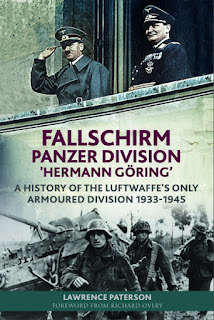How the World allowed Hitler to Proceed with the Holocaust written by
Tony Matthews and published by Pen & Sword Books - £25.00 - Hardback - Pages 480
There is no doubt that the Évian conference was a critical turning point in world history. The disastrous outcome of the conference set the stage for the murder of six million people. Today we live in a world defined by turmoil with a disturbing rise of authoritarian governments and ultra right-wing nationalism. The plight of refugees is once more powerfully affecting public attitudes towards those most in need. Now, on the 76th anniversary of the liberation of Auschwitz and the end of the Second World War, it’s time to reflect on the past to ensure we never again make the same mistakes.
Tragedy at Évian also shines a spotlight on some of the astonishing and courageous stories of heroic efforts of individuals and private organisations who, despite the decisions made at Évian, worked under extremely dangerous conditions, frequently giving their own lives to assist in the rescue of the Jewish people.
This is one of those books that leaves you astounded with disbelief and bewilderment at how ineffectual people can be. The book focuses primarily on the Evian-les-Bains Conference in France and how a good number of countries knew of the impending problems and disaster for the Jews, and yet very few did anything about it. A book that seems very apt at the moment with the conflict happening in Ukraine with millions of people being displaced to neighbouring countries. In a way, it seems now more and more people are aware of the situation to migrant people, whereas back at the start of WWII it seems the world was far less aware of these situations.
I must admit that when I started reading this book I thought it might be a bit hard going or not the most lively or interesting read when the main focus is on the conference. But actually, it is a very good book, comprehensive and detailed but it runs smoothly and is very interesting, so huge credit to the author Tony Matthews for his writing. Whist the book can be hard reading at times due to the wretched subject matter, it does feel like an important book to read and learn from. Certainly a good book I would happily recommend to others and a good subject matter that needs writing about.










.jpg)

.jpg)



.jpg)
.jpg)